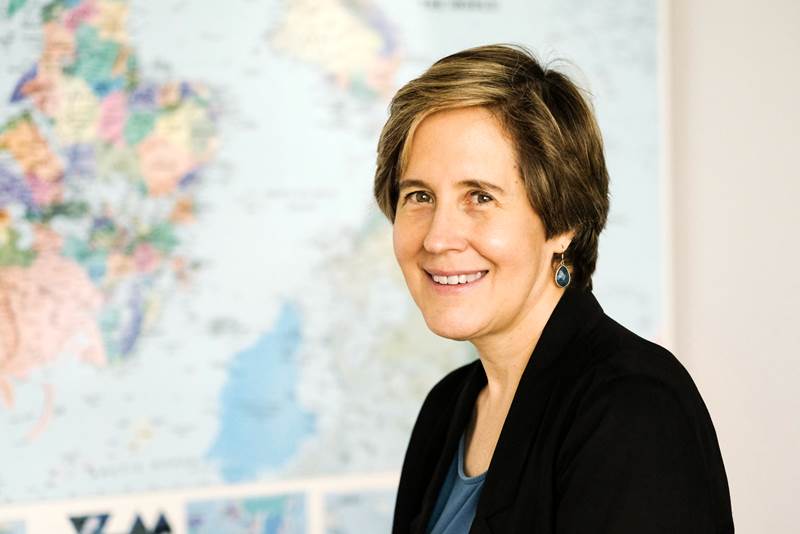
Back to Research@SMU Issue 45
By Sim Shuzhen
SMU Office of Research & Tech Transfer – Hunger and poverty, which still afflict hundreds of millions of people worldwide, are such intractable, large-scale problems that any talk of bringing an end to them may sound like idealistic fantasy.
But in September 2015, member states of the United Nations adopted a set of Sustainable Development Goals aimed at doing just that: among other specific targets, these goals include the elimination of hunger and extreme poverty by 2030.
These problems are certainly bigger than one country, and indeed, bigger than what governments acting alone can handle.
“When you look at the world's big challenges, it's becoming quite clear that governments, businesses and civil society organisations have to be able to work together much more than ever before,” says Ann Florini, Professor of Public Policy at the Singapore Management University (SMU) School of Social Sciences.
Professor Florini’s research focuses on how partnerships between these three sectors of society – known as tri-sector collaborations or public-private partnerships – can be carried out effectively. “We know very little about how to make these things work in practice – what are the conditions under which you can get a successful outcome, and what kinds of problems lend themselves to partnerships?” she says.
Bigger dreams for smallholders
Some of the most destitute people in the world are the 1.5 billion whose livelihoods depend on rural smallholder agriculture. “If we want to achieve the Sustainable Development Goals of eliminating poverty and hunger, this is the set of people we should look at first,” says Professor Florini.
Tri-sector collaborations are in fact already widespread in agriculture. In Asia, platforms such as the World Economic Forum’s Grow Asia and Indonesia’s PISAgro bring together businesses, governments and non-governmental organisations (NGOs) to help smallholder farmers gain access to markets, education and financing, for example.
Businesses stand to benefit from such efforts to increase smallholder productivity, because they need what these farmers produce as part of their value chains, says Professor Florini. But while some partnerships do result in clear-cut income benefits to farmers, ensuring that they do so requires careful attention to the design and implementation of the specific partnership, involving ongoing conversations with farmers, NGOs and local government.
“The question is how do you make sure that what businesses do isn't exploitative, but actually enriches farmers and increases their income, and does so in a way that is environmentally sustainable?” she asks.
Professor Florini’s research addresses such questions, with a focus on agricultural partnerships in Indonesia and Vietnam. To assess the impact of partnerships, there is no substitute for good old-fashioned fieldwork – going out and conducting interviews with the various stakeholders involved, she says. Getting access, however, can be difficult, as interviewees can be wary.
“It’s a little like investigative journalism except that we’re not allowed to name names,” she says. “But we’re not trying to make anybody look bad – we’re really trying to understand what approaches are best suited to a particular country.”
A primer on partnerships
More research is necessary because tri-sector collaborations are still a relatively new approach to tackling rural development issues, explains Professor Florini. Such collaborations are seen as alternatives to standard methods that involve injections of funding from outside donor agencies – regarded as unsustainable because no agency has resources enough to help the millions of smallholders around the world.
But the jury is still out on whether the tri-sector approach will actually benefit those it is meant to help. “It's still very much disputed – is this approach going to benefit food security for the region, or is it going to be exploitative?” says Professor Florini.
Although her research on agricultural partnerships in Southeast Asia is still in its early stages, Professor Florini has spent many years studying tri-sector collaborations in areas such as energy and environmental policy.
One key element to a successful, lasting collaboration, she says, is being clear about the interests and incentives of each stakeholder from the get-go.
“You are never going to have common interests, but you can have aligned interests,” she explains. “But it’s not easy to figure out what those are, because people’s understanding of their own interests is sometimes pretty superficial.”
Building trust is a second critical component, especially when partnerships bring together groups that operate on fundamentally different principles – NGOs and multinational corporations for example.
“No one is in authority in these partnerships – they are the opposite of top-down hierarchy,” says Professor Florini. “If partners don't develop a real comfort level with each other and an ability to trust each other's good intentions, then when you run into the inevitable snag, things fall apart very quickly.”
Prospects and perspectives
In the future, Professor Florini is interested in getting a more in-depth understanding of how each Asian country’s system of governance and political economy affects prospects for partnership. This would impact how partnerships should be designed, she says.
“There are a tonne of variables: different company laws, social practices, and governmental and societal expectations of the role that each sector plays,” she says. “There's a huge research agenda, and we're just barely getting started on it.”
The gravity and scope of the problems Professor Florini works on are enough to daunt even the most intrepid researcher. However, missing the 2030 deadline for the Sustainable Development Goals is not an option if we want to live in a world with social, economic and environmental stability, she says.
Nonetheless, Professor Florini approaches her research with a healthy dose of perspective. “On one hand there’s the big question of how we are going to achieve the Sustainable Development Goals. But if you look on the ground, there’s the very specific question of what does this actually mean for the smallholder who has no education and is barely scraping by with one hectare of land?” says Professor Florini.
“I always come back to that perspective. It's really easy to get lost in the clouds thinking about the big problems.”
Back to Research@SMU Issue 45
See More News
Want to see more of SMU Research?
Sign up for Research@SMU e-newslettter to know more about our research and research-related events!
If you would like to remove yourself from all our mailing list, please visit https://eservices.smu.edu.sg/internet/DNC/Default.aspx

